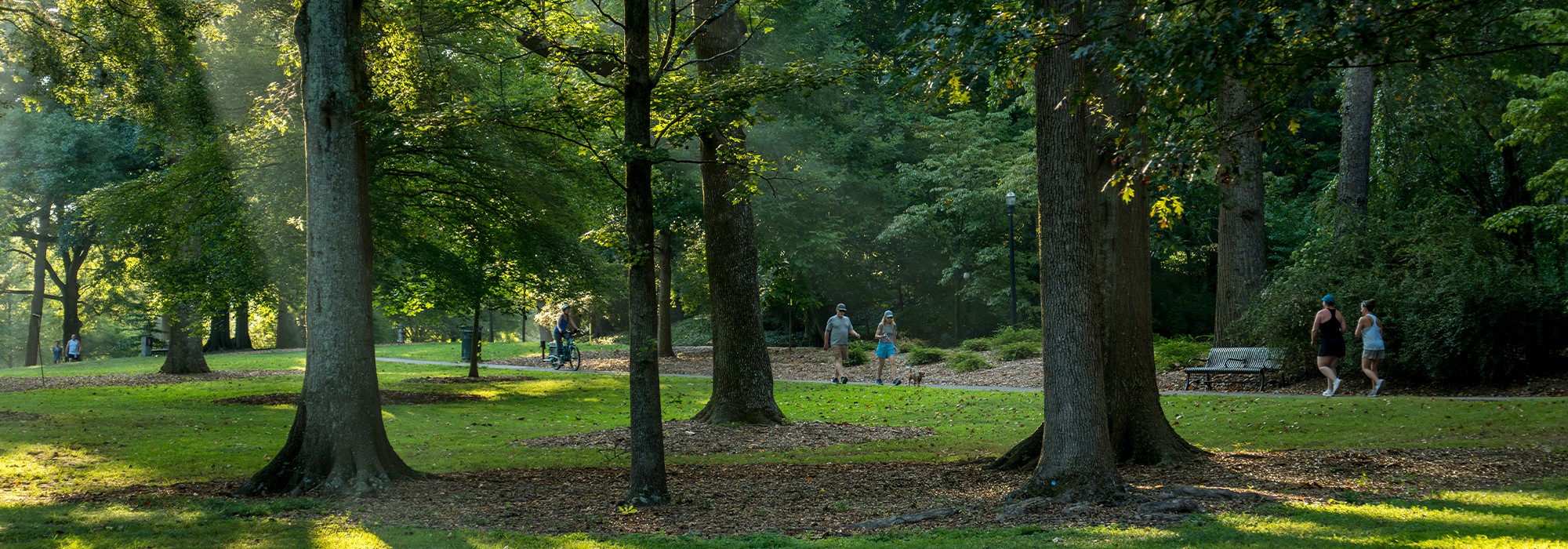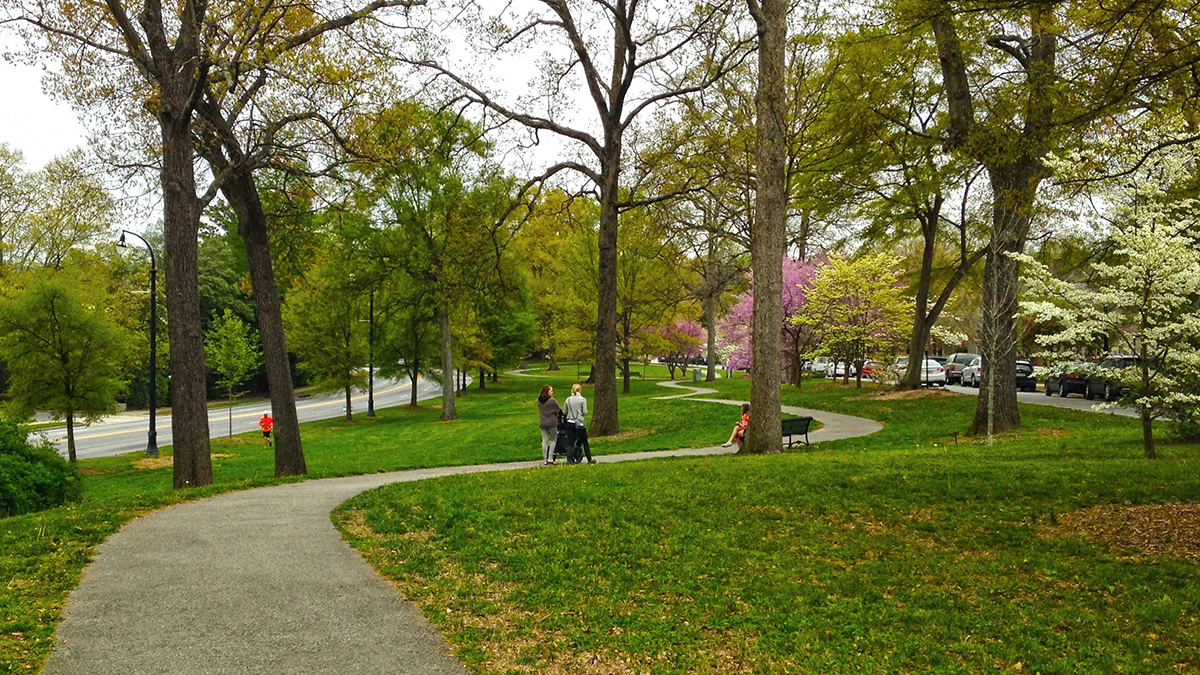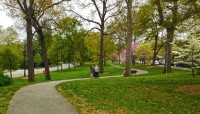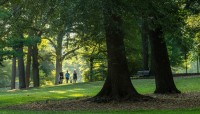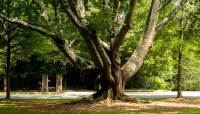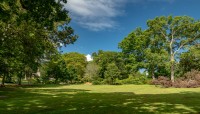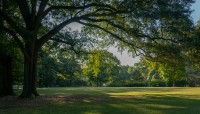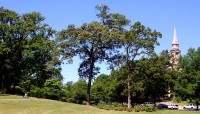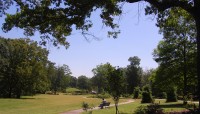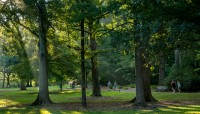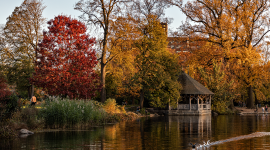Landscape Information
This 4.2 square-mile neighborhood, conceived by Joel Hurt and named for a park in Baltimore, Maryland, began as a picturesque residential community. Hurt, who created Atlanta’s first streetcar suburb, Inman Park, hired Frederick Law Olmsted, Sr., to develop a master plan. Olmsted worked with John Charles Olmsted on the 1893 plan, which featured a divided, curvilinear parkway called Ponce de Leon Avenue that served as the community’s central spine. The parkway was interlaced with six linked public parks which progressed along a broad grassy median, transforming the traditional village green into a linear form.
Olmsted Brothers updated the plan in 1905, and construction of the 1,400-acre development commenced that year. Parkland was concentrated in the valleys formed by Peavine Creek, with denser tree planting in pockets throughout the neighborhood and along the streets. The spacious residential lots stipulated deep setbacks from the street, with stately mansions designed in various revival styles along Ponce de Leon Avenue by many of Atlanta’s notable architects. The development opened in 1908; that same year financial difficulties forced Hurt to sell his interests to a syndicate led by Asa Griggs Candler, founder of Coca-Cola Company. In 1915, Candler relocated the main campus of Emory University to 631 acres within the community, and in 1924 a country club and golf course were built in the southeast corner of the neighborhood. Residential construction continued through 1936.
In the 1980s and early 1990s residents successfully protested plans to establish a highway through the community and to expand Ponce de Leon into an expressway. In 1997 the Olmsted Linear Park Alliance (OLPA) a public-private partnership was founded to preserve and protect Olmsted’s design intent through a master plan adopted by the City of Atlanta, DeKalb County and Fernbank, Inc.
The 1,300-acre Druid Hills Historic District was listed in the National Register of Historic Places in 1979.



